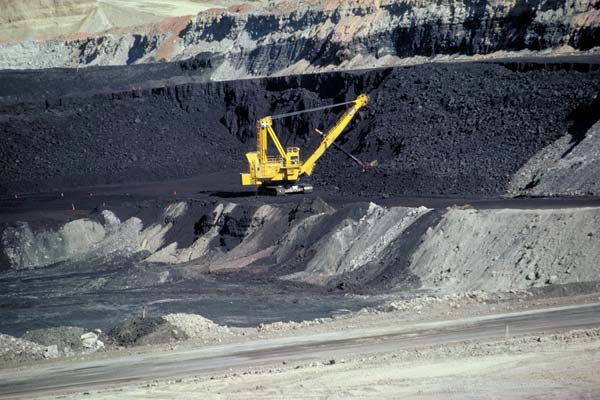While mankind has been pumping carbon into the atmosphere since the discovery of fire, the modern era of carbon emissions began roughly 250 years ago.
Now a new report by global scientists goes further than any before: Carbon emissions must ultimately be cut to levels so low that they approach zero.
If they are not, effects that are already being felt will become yet more extreme.
DON'T MISS: Is 400 PPM Actually The Most Important Metric Ever For Cars? (May 2013)
Those include heatwaves, droughts, extreme rainstorms producing floods and coastal surges, and wildlife extinctions due to rapid habitat changes on land and in the seas.
The report was issued a week ago yesterday in Copenhagen by the United Nations' Intergovernmental Panel on Climate Change.

Coal Mine
It is the first such assessment since 2007, and its message is unambiguous: Carbon emissions must be cut sharply and rapidly.
Two-thirds of all the carbon possible under a limit that would avoid the worst of the changes has already been pumped into the atmosphere, the report says.
Reiterating the accepted scientific consensus, it concludes that mankind's role in causing climate change is "clear" and that the phenomenon of global warming is "unequivocal."
ALSO SEE: Rockefeller Oil Heirs Will Divest Fossil-Fuel Stocks From Family Funds
“In recent decades," its authors wrote, "changes in climate have caused impacts on natural and human systems on all continents and across the oceans.”
The effects of the carbon already pumped into the air, it says, will last for hundreds and perhaps thousands of years even if carbon emissions fall sharply in the near future.
The dawn of the Industrial Age in coal-rich England in the mid-18th century began to boost the amounts of carbon dioxide spewed into the air by combustion of fossil fuels.
Within 200 years, the globe saw the advent of steam power, railroads, electric power, automobiles, and national road systems in Europe, North America, and thence the rest of the world.

Lifecycle carbon emissions of electric Renault Fluence ZE versus gasoline, diesel versions
Today, road transport accounts for roughly one-quarter of global carbon emissions, with electric power generation a large portion of the remainder.
Battery-electric vehicles, especially those recharged using energy from renewable sources, have by far the lowest per-mile carbon footprint of any form of transport.
MORE: U.S. Oil Future: Energy Independent By 2030, Bigger Than Saudis In 2020 (Nov 2012)
While the scientific consensus is accepted in Europe and much of the developing world, the United States has seen a sharp, partisan-based debate over whether climate change exists at all.
Combined with bitter political gridlock, that "debate" over accepted science has precluded any kind of national energy policy.

U.S. Environmental Protection Agency adminstrator Lisa Jackson and President Barack Obama
Meanwhile, North America has vastly increased its oil and gas production. The oil is largely from shale deposits that have a far higher carbon footprint than other sources.
Environmental activist group Greenpeace called the statement "gamechanging" in a statement the same day.
But how and whether the new and stronger statement will translate to any concrete action in the politically gridlocked U.S. remains open to question.
_______________________________________________













